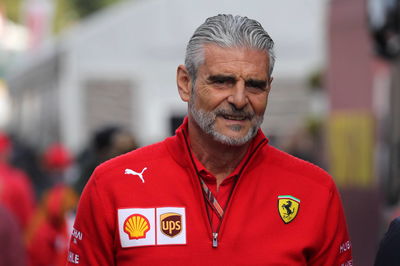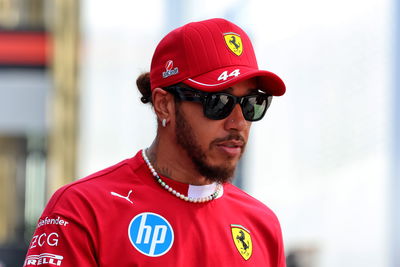Where are the Italian F1 drivers?
Another Italian Grand Prix rolls around as Formula 1 arrives in Monza but there is still no sign of the nation with one of the heaviest presence in the sport seeing a driver return to the grid.
Since the joint departure of Jarno Trulli and Vitantonio Liuzzi from the F1 grid at the end of 2011, with both drivers failing to find a race seat triggered by a new wave of financially-backed drivers holding favour, the Italian fans have been starved of a name (which isn’t Ferrari) to adorn their tricolor flags.
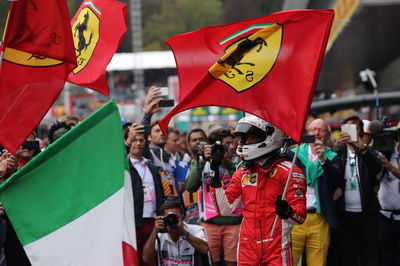
Another Italian Grand Prix rolls around as Formula 1 arrives in Monza but there is still no sign of the nation with one of the heaviest presence in the sport seeing a driver return to the grid.
Since the joint departure of Jarno Trulli and Vitantonio Liuzzi from the F1 grid at the end of 2011, with both drivers failing to find a race seat triggered by a new wave of financially-backed drivers holding favour, the Italian fans have been starved of a name (which isn’t Ferrari) to adorn their tricolor flags.
Antonio Giovinazzi’s two-race outing at Sauber filling in for the injured Pascal Wehrlein at the start of 2017 was always expected to be a short-lived opportunity but following his failure to impress – notably crashing in qualifying and the race in China – the Ferrari-backed youngster has seen his chances limited to fleeting practice and test outings.
There is no doubt the Italian public will be more rapturous than ever with Ferrari expected to dazzle this year – as it aims to end its barren run at Monza with a first win since 2010 – but if a Scuderia driver is to reach the top step of the podium on Sunday the accompanying national anthems will start with a German or Finnish tune.
The last Italian driver to win in F1 stretches back 12 years to Giancarlo Fisichella while the nation’s underachievement is notable compared to its major rivals.
16 drivers in total have competed in F1 from Italy collecting a combined effort of 43 GP wins – 228 fewer than from Great Britain – while it could slip behind Australia having seen Daniel Ricciardo help push his nation's total to just one win behind after his Monaco GP triumph in May.
But who is likely to fill the gap which has grown over the past decade and what caused it call in the first place?
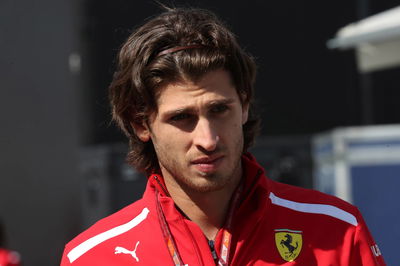
History repeating itself
Italy’s latest hope Giovinazzi certainly ticks plenty of boxes to end his country’s unwanted record.
An impressive, albeit not glittering, junior single-seater career as 2015 European F3 runner-up followed up by second place in the 2016 GP2 Series. Tick.
A key part of the Ferrari Driver Academy with affiliation to the most successful and synonymous F1 team in history being priceless. Tick.
Young, charismatic and extremely eager to succeed having jumped at every racing opportunity offer having competed in DTM, European Le Mans, World Endurance Championship and Le Mans in between his F1 duties. Tick.
But midway through his second year without a full-time racing programme, graduating from GP2 as Ferrari’s F1 test driver, his career is stalling and he remains an outsider for a 2019 F1 drive.
Giovinazzi is also in danger of following the fate of the previous young Italian star, curiously one year his junior, when Raffaele Marciello accepted his single-seater career was all-but over just after his 21st birthday. The 2013 European Formula 3 champion moved into sportscar racing in 2017 joining the Blancpain GT Series.
The fairytale return of Brendon Hartley can give the likes of Marciello hope the dream is never over but having left the Ferrari Driver Academy, while the New Zealander maintained his ties to Red Bull, backers will be hard to come by. For Giovinazzi, who has recently been given the nod to compete for Tequila Patron ESM at IMSA’s Petit Le Mans, a similar route could be forged if is path to F1 remains blocked next year.
Where is the next great hope?
A quick scan across the support series ranks struggles to provide confidence of a flood of Italian talent waiting to climb the ranks. In Formula 2, Luca Ghiotto and Antonio Fuoco are both well-versed challengers in the F1 feeder series – the latter part of the Ferrari junior ranks – but neither is creating headlines like title fighters George Russell and Lando Norris who are heavily linked to F1 drives.
In GP3 20-year-old Leonardo Pulcini is impressing but a way off being ready while Alessio Lorandi is transitioning between the two series.
A delve across the remaining Ferrari juniors brings up promising youngster from all across the world, while Italian sponsors tend to favour the Ferrari brand for exposure over an up-and-coming driver. The hope of a wealthy backer often makes its bed in the comfort of Maranello in its attempts to gather affection from the Italian public and Tifosi.
Since the reshaping of the Italian national single-seater set-up, with the Formula 4 series replacing Formula Abarth in 2014, every title winner has competed for an Italian squad but come from overseas: Lance Stroll (Canada), Ralf Aron (Estonia), Marcos Siebert (Argentina) and Marcus Armstrong (New Zealand).
This isn’t to say Italy is struggling for interest or participation with a healthy headcount in Italian F4 plus the multitude of karting championships and ranks. Rather there is fleeting support in place to see its homegrown talent reach the top unlike in the UK with its highly-prestigious annual McLaren BRDC Award boosting the careers of David Coulthard, Jenson Button, Paul di Resta and, of course, Lewis Hamilton.
Even crossing borders to find backing has been favoured in recent years with Liuzzi securing his path to F1 in Red Bull’s junior programme.
Ultimately, in Italy’s motorsport court Ferrari resides supreme.
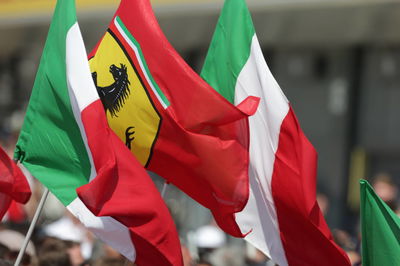
Enzo Ferrari reluctance to select homegrown talent grew following his fear of harming his own during the frightening days of regular fatalities in F1 after the deaths of Eugenio Castellotti (1956), Luigi Musso (1958) and Lorenzo Bandini (1967).
This trend has continued into modern F1 with Giancarlo Fisichella the last Italian to race for the Scuderia, which only came about in an impromptu move to fill the gap left by the injured Felipe Massa for the latter half of 2009. Accepting Ferrari’s call, taken from his heart rather than his head, it ended up wrapping up his F1 career early with his previous place at Force India filled by Liuzzi for 2010.
Ferrari’s power has produced an unwanteds the side-effect on the nation’s drivers. Often Ferrari’s stars – Michael Schumacher, Kimi Raikkonen, Massa and Sebastian Vettel – have been treated as one of its own while the warmth of the Italian public is clearly reciprocated by Vettel in his ‘grazie ragazzi’ radio celebrations and tendency to wave the Italian and Ferrari flags over his own German one following victories in his blood red car.
With this pattern showing no signs of being broken, Italy will continue to cheer on a team and a car over its own flesh and blood.
